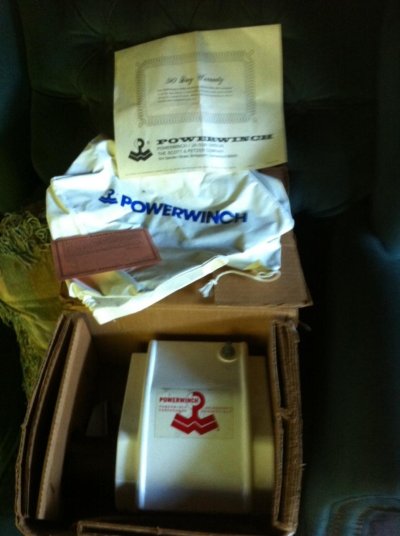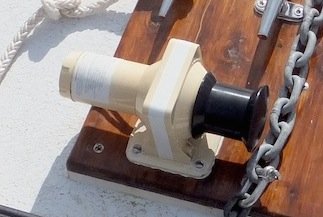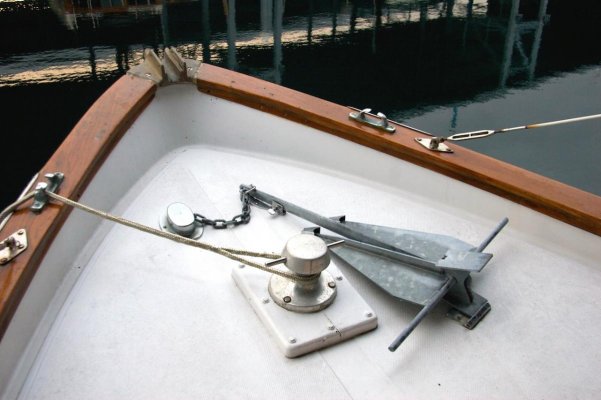Nomad Willy
Guru
Ranger,
"Quote:
Originally Posted by manyboats View Post
So one can have reasons to use all chain .. but none of them are objective.
I over stated or tried to simplify too much. There are objective reasons to use all chain like you don't trust the splice .. or any other good reason. But gaining anchor performance is not one of them. If you use the same weight of rode in a combo configuration you will enjoy higher performance. So chain above the midway point between the anchor and bow is excess baggage if compared to a combo rode of the same weight. The weight of the upper all chain rode is just better spent on the lower half of the rode.
If you anchor in Alaska in 50 to 100' of water the load on the windlass will be high. But if there's not much wind or current one can give the winch a cool down break mid way up. Having 50' of chain would be an advantage.
FF
Most would usually have more than one aboard.
waddenkruiser,
Few agree w me here but I think saving weight on any pleasure boat is worth doing .. maybe not w the money factor included but if I had an all chain rode and a fairy godmother I' ask her to make my all chain rode into a combo rode of the same weight w chain on the first 25% of the rode. But if I already had a 200' rode of 1/4" chain i'd just leep it around here but if I was back in Alaska I'd want at least another 100' of line included. But if I was building a new boat I'd huck the 1/4" chain and use about 50' of 3/8ths and 200 to 350' of line depending on location. But not all chain.
I sure like your "ultimate catenary - stiff rode" range description of anchor performance .. Or should I say rode performance?
"Quote:
Originally Posted by manyboats View Post
So one can have reasons to use all chain .. but none of them are objective.
I over stated or tried to simplify too much. There are objective reasons to use all chain like you don't trust the splice .. or any other good reason. But gaining anchor performance is not one of them. If you use the same weight of rode in a combo configuration you will enjoy higher performance. So chain above the midway point between the anchor and bow is excess baggage if compared to a combo rode of the same weight. The weight of the upper all chain rode is just better spent on the lower half of the rode.
If you anchor in Alaska in 50 to 100' of water the load on the windlass will be high. But if there's not much wind or current one can give the winch a cool down break mid way up. Having 50' of chain would be an advantage.
FF
Most would usually have more than one aboard.
waddenkruiser,
Few agree w me here but I think saving weight on any pleasure boat is worth doing .. maybe not w the money factor included but if I had an all chain rode and a fairy godmother I' ask her to make my all chain rode into a combo rode of the same weight w chain on the first 25% of the rode. But if I already had a 200' rode of 1/4" chain i'd just leep it around here but if I was back in Alaska I'd want at least another 100' of line included. But if I was building a new boat I'd huck the 1/4" chain and use about 50' of 3/8ths and 200 to 350' of line depending on location. But not all chain.
I sure like your "ultimate catenary - stiff rode" range description of anchor performance .. Or should I say rode performance?
Last edited:




